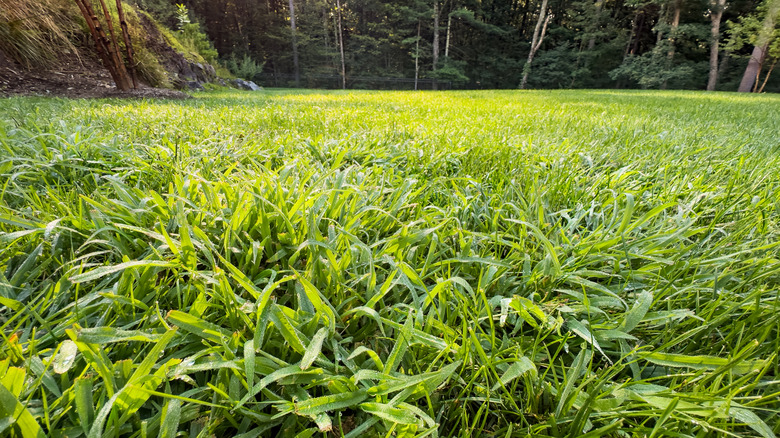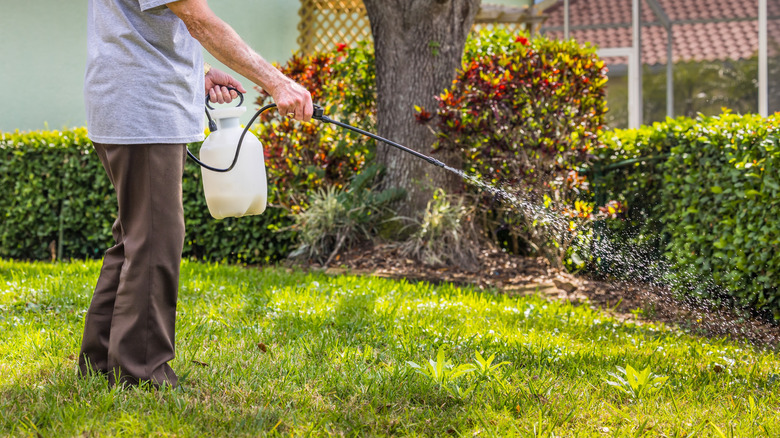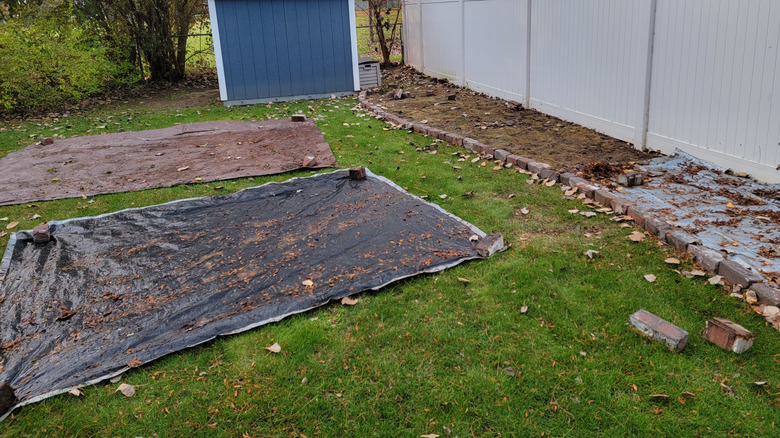The Easiest Way To Remove Crabgrass From Your Lawn
Technically a weed, crabgrass (Digitaria sanguinalis) has a habit of infiltrating American lawns, blending in with other grasses in color and general appearance. But take a closer look and you'll realize crabgrass has a different growth pattern, a coarser texture, and a lighter green color than traditional grasses preferred in lawns.
If you have an uncontrolled crabgrass problem on your hands, you're likely considering methods of removal. There's an easy solution, but you might not love it. That's because the easiest way to rid your lawn of this unsightly interloper is with herbicides, particularly using a dual approach. See, crabgrass is a weed that's best tackled with strong chemicals that thwart its growth and kill it off, while the most effective way to prevent it is to use a different chemical herbicide before it even has a chance to take hold. However, there are also more natural alternatives to consider. With these methods at your disposal, you'll keep your crabgrass problem at bay.
How herbicides can combat and prevent crabgrass
Crabgrass is extremely common here in North America, given that it thrives in USDA Hardiness Zones 2 to 11. The biggest difference between crabgrass and more desirable grass varieties is their growth pattern. Crabgrass grows low and out and thrives in poor soil. Instead of sending single blades of grass upward from the ground, crabgrass grows in wild tufts with offshoots and strong roots that spread outward, just beneath your mower's blades. This makes it particularly difficult to remove crabgrass manually.
This is why chemicals are your best bet. Some post-emergent herbicides are specifically designed to kill certain weeds and grasses, but they can still harm your flowers and other plants, so be sure to only apply them to the crabgrass. There are a variety of chemicals commonly used in this category, including quinclorac, and you can find options at most home improvement and garden stores.
Once your problem is under control, it's time to prevent a reoccurrence. The best time of year to kill crabgrass is early spring, when you should use a pre-emergent herbicide to target the seeds and roots of the plant before it can establish itself. Frost kills crabgrass, so your lawn in late winter should be free of the weed. A pre-emergent herbicide prevents crabgrass from growing in the first place, but it often relies on water to work. Be sure to time your application with rainfall or else plan to water your lawn after applying.
Removing crabgrass without chemicals
In some cases, you can kill crabgrass naturally with a handy kitchen essential. Baking soda mixed with vinegar is an eco-friendly and safe way to treat small patches of the weed without the use of harsh chemicals. You can also do so manually with an upright weeding device. For large areas, you can try solarization. This is a fancy word for harnessing the power of the sun to kill the grass for you — no chemicals required.
For solarization, begin by covering your lawn with tarps or plastic sheeting. The sun will heat the plastic, and the heat will become trapped underneath to kill the grass over time, usually within two to three months. From there, you can till the debris into your soil to prepare for a new lawn or manually remove it.
Once the crabgrass has been eradicated, you'll want to prep your lawn for the best outcomes by filling in the bare spots. Choose a grass variety that will thrive in your region. Then, based on the type of grass you're planting, improve your soil with the proper mix of nutrients and amendments, and adjust the pH level if needed. Next, begin planting your new seed. Most grasses will do best when planted either in spring or fall.


